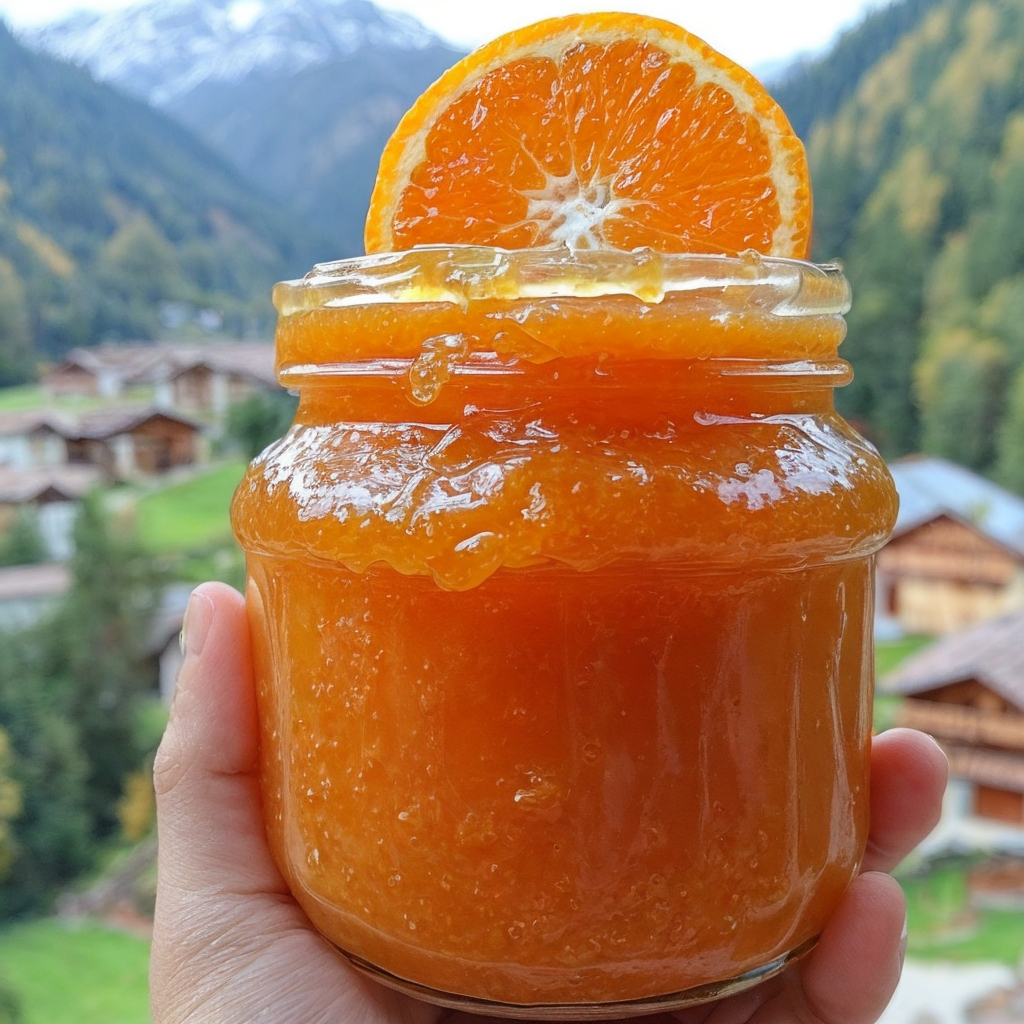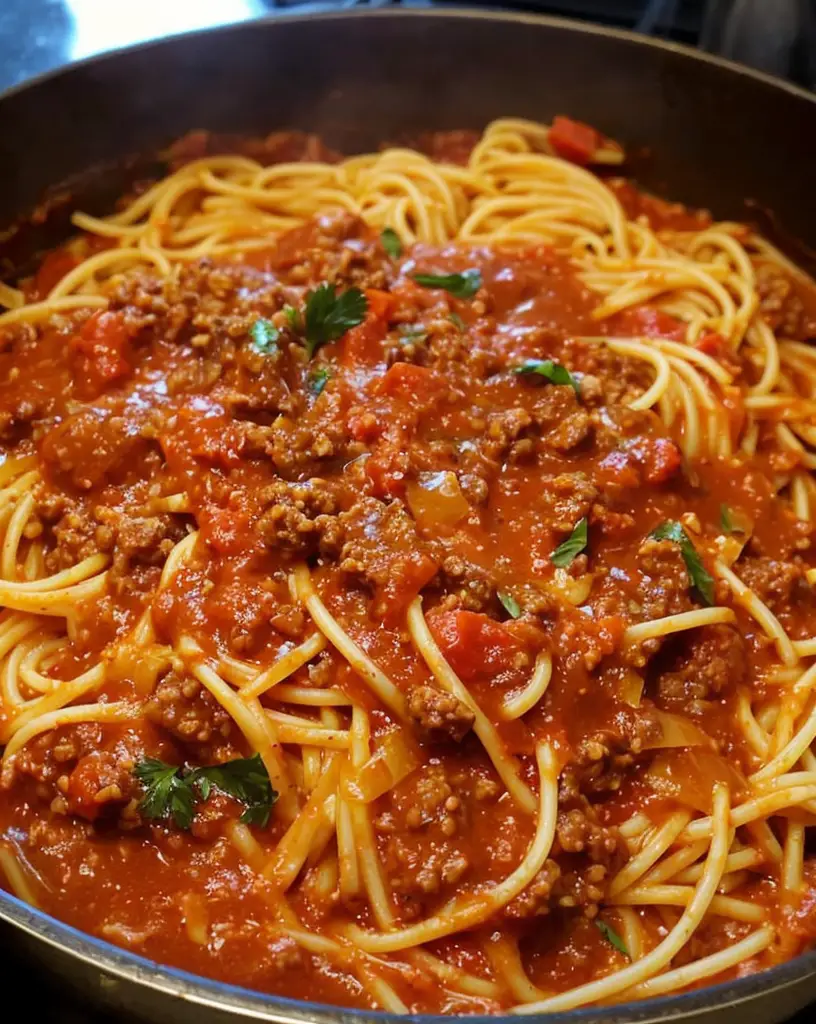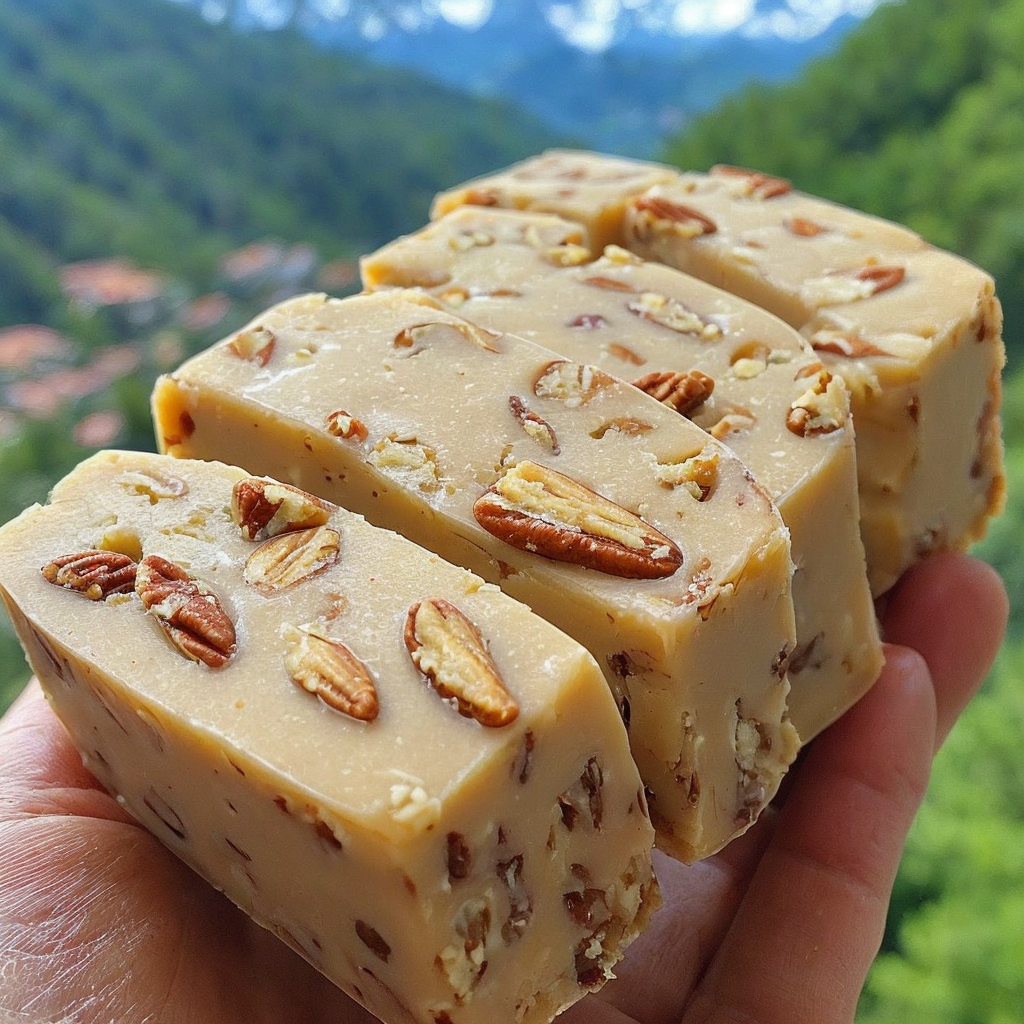Delicious Orange Jam Recipe: A Sweet Citrus Delight
Indulge in the bright and zesty flavors of homemade Orange Jam, a delightful spread that captures the essence of fresh citrus in every jar. This luscious jam not only adds a pop of color to your breakfast table but also brings a burst of flavor that can brighten up your mornings. Imagine slathering this sweet, tart jam on warm toast or using it as a filling for pastries; every bite is like a sunny day in a jar.
In this recipe, we will guide you through the simple process of making this delicious Orange Jam, which captures the sweet and tangy notes of oranges sweetened just right. Whether you spread it on pancakes, pair it with cheese, or enjoy it right out of the jar, this jam is guaranteed to become a household favorite. Plus, the preparation is straightforward, making it a perfect activity to do with family or friends.
Quick Recipe Highlights
- Flavor Profile: This Orange Jam strikes a perfect balance between the sweet notes of ripe oranges and the tangy undertones that citrus lovers adore.
- Texture: The jam boasts a luscious consistency, smooth yet filled with small bits of pulp that deliver excitement in every spoonful.
- Aroma: The aromatic fragrance of fresh oranges fills the kitchen, invoking memories of sun-soaked orchards.
- Visual Appeal: The vibrant orange color of the jam is not only eye-catching but also suggests the freshness and quality of the ingredients used.
- Skill Level Needed: This recipe is suitable for beginners, requiring just basic kitchen skills and minimal oversight.
- Special Equipment: All you need is a pot, a wooden spoon, and canning jars to store your delicious creation.
Recipe Overview
- Difficulty Level: Making Orange Jam is easy and enjoyable, perfect for beginners looking to try their hand at preserving fruit.
- Category: This recipe falls under breakfast spreads and is ideal for both sweet and savory pairings.
- Cuisine: Orange Jam has roots in various culinary traditions, often found in both European and American kitchens, celebrating the sweetness of citrus fruits.
- Cost: The cost of making your Orange Jam is minimal, primarily consisting of fruit and sugar, making it a budget-friendly option.
- Season: While oranges are available year-round, winter is the peak season when they are at their sweetest and most flavorful.
- Occasion: Perfect for breakfast gatherings, holiday brunches, or as homemade gifts, this Orange Jam fits any occasion delightfully.
Why You’ll Love This Recipe
The taste and texture of this Orange Jam are simply irresistible. Each spoonful is a blend of sweetness with a hint of tartness, reminiscent of a sunny day. The smooth consistency makes it delightful to spread, whether on toast or as a filling for desserts. Enjoying this homemade jam feels rewarding, knowing you crafted this delightful treat from scratch using simple ingredients.
Convenience is key when preparing this recipe. With just a few ingredients and minimal kitchen tools required, anyone can seize the opportunity to make flavorsome homemade jam. Unlike store-bought varieties loaded with additives, this Orange Jam is made entirely of fresh oranges, preserving their natural goodness and vibrant flavors.
Nutritionally, oranges are packed with vitamins, particularly vitamin C, which is essential for boosting your immune system. The inclusion of natural fruit in your diet, through delicious jams like this, adds beneficial nutrients and can enhance overall well-being.
Socially, sharing homemade jam is an excellent way to connect with others. Whether you gift a jar or serve it to guests at a breakfast gathering, people appreciate the effort and love that goes into homemade treats. This jam can also serve as a fascinating discussion piece regarding your culinary endeavors.
Finally, the cost-effectiveness of making your Orange Jam cannot be overlooked. With the ability to produce several jars at minimal expense, you have an endless supply of this flavorful spread ready to enjoy anytime. Why not indulge while saving money?
Historical Background and Cultural Significance
The origin of Orange Jam can be traced back to ancient civilizations that recognized the sweetness of fruits and the importance of preserving them to enjoy year-round. Citrus fruits, particularly oranges, were revered for their health benefits and flavorful contributions to diets across cultures.
In culinary history, preserving fruits as jams and jellies became popular during the 18th century, particularly in Europe, where it allowed households to make the most of seasonal fruits. Families utilized traditional methods passed down through generations, showcasing the significance of resourcefulness and creativity in cooking.
As recipes evolved, regions began to develop their unique variations of Orange Jam. Some traditions introduce spices like cinnamon or ginger, while others explore combining citrus with different fruits, resulting in diverse flavors and textures.
Today, the cultural significance of Orange Jam continues as people embrace homemade cooking, celebrating nostalgia and the connection to family heritage. This jam stands as a testament to the joy of preserving seasonal produce for future enjoyment.
Ingredient Deep Dive
Oranges: The star ingredient in this Orange Jam, oranges are rich in history and cultural importance, symbolizing fertility and prosperity in many cultures. They are packed with nutritional benefits, including vitamin C, folate, and antioxidants, which support immune health and overall wellness. When selecting oranges, opt for firm, brightly colored fruit that gives slightly when pressed, indicating freshness. For storage, keep them in a cool, dry place, and use them within a week or two of purchase for optimal flavor. If you have surplus oranges, consider freezing them for later use, or substituting them with other citrus like grapefruits or lemons for a unique twist.
Sugar: A vital ingredient in preserving fruit, sugar not only sweetens the jam but also acts as a preservative, helping to maintain the jam’s consistency and preventing spoilage. From a nutritional standpoint, sugar provides quick energy; however, moderation is encouraged in any diet. When choosing sugar, granulated white sugar is typically preferred, but brown sugar can lend a slight difference in taste. Store sugar in an airtight container in a cool, dry location where it can last indefinitely. Consider using alternative sweeteners, such as honey or maple syrup, for a unique flavor, but adjust quantities accordingly to achieve the desired sweetness.
Common Mistakes to Avoid
- Using overripe oranges can lead to a jam that ferments rather than preserves. Ensure your fruit is fresh and firm for a successful outcome.
- Not measuring ingredients accurately will affect the balance of sweetness and acidity, altering the flavor profile of your jam.
- Skipping the sterilization of jars can lead to spoilage. Ensure that jars are sterilized before filling them with jam.
- Cooking the jam for too long can create a caramelized flavor that may not be desirable. Monitor closely to achieve perfect consistency.
- Not properly sealing jars can cause contamination. Make sure the seals are intact to extend shelf life.
- Overcooking the mixture can lead to a jelly-like texture instead of a spreadable consistency. Cook just until the setting point is reached.
- Ignoring proper storage methods can result in spoilage. Store your sealed jars in a cool, dark place.
- Not tasting during the cooking process may miss the chance to adjust sweetness or acidity to your liking.
- Using a non-stick pot may prevent proper caramelization and texture. Opt for a heavy-bottomed pot for even cooking.
- Not allowing the jam to cool before storing could cause steam to build up, leading to condensation and spoilage.
Essential Techniques
Preparing the Fruit: Properly washing and peeling the oranges is essential to ensure no pesticides or impurities remain. Master this step by using a soft brush under running water. Look for shiny skin with no blemishes for the best results.
Cooking Techniques: Understanding the importance of cooked sugar is crucial in making jam. The sugar should be dissolved completely before the mixture reaches the boiling point. To master this, maintain medium heat and stir regularly. Use a thermometer to check for proper temperatures; visual cues like bubbling and thickening indicate success.
Pro Tips for Perfect Orange Jam
1. Always select ripe, seasonal oranges for the best flavor; avoid using overripe or inferior quality fruit.
2. Experiment with adding zest from the oranges to intensify the citrus flavor; just a teaspoon can make a significant difference.
3. Consider adding a splash of lemon juice for a hint of acidity; this can balance the sweetness beautifully.
4. Stir the mixture continuously while cooking to prevent it from sticking to the bottom of the pot and burning.
5. Test for consistency by spooning a small amount onto a cold plate; it should hold its shape without running.
6. Be creative with spices; adding a pinch of cinnamon or nutmeg can introduce an exciting twist to your jam.
7. Store opened jars in the refrigerator for maximum freshness and use within a couple of months.
8. Share the love; gift jars of your homemade jam to friends and family for a personal touch.
Variations and Adaptations
For a regional twist, consider adding spices like ginger or cardamom for warmth. Seasonal adaptations could include mixing in berries when they are ripe in summer, creating unique flavor combinations. For dietary modifications, this Orange Jam is easily adaptable to accommodate lower sugar needs by substituting half of the sugar with a sweetener like stevia. For flavor variations, try incorporating vanilla extract or zest from lime alongside the oranges, enhancing the tropical essence. Texture modifications can be achieved by finely chopping the pulp for a smoother jam or leaving it chunkier for added bite. Presentation alternatives could involve canning the jam in themed jars for holidays or special occasions.
Serving and Presentation Guide
Plating your Orange Jam beautifully can elevate the experience. Serve it in a neat glass jar for a rustic touch at breakfast. Consider garnishing with fresh mint leaves for a pop of color. Traditional accompaniments include warm scones or biscuits, while modern serving suggestions may feature a cheese platter, pairing well with soft cheeses. Serving the jam alongside tea or coffee should see it consumed while still slightly warm. Be mindful of portion control, ensuring the jam is available in small servings to keep it fresh and enjoyable for longer.
Wine and Beverage Pairing
When pairing wine with Orange Jam, sweet wines such as Moscato or Late Harvest Riesling complement the citrus flavors nicely. For non-alcoholic alternatives, consider serving it with mint-infused iced tea or sparkling water for a refreshing twist. If enjoying with breakfast, a rich cup of freshly brewed coffee or tea provides a delightful contrast to the sweet jam. Serve beverages chilled to enhance the overall dining experience.
Storage and Shelf Life
Proper storage of your Orange Jam is essential for longevity. Once sealed, store the jars in a cool, dark place away from direct sunlight. After opening, keep your jam refrigerated and consume it within 2-3 months for the best flavor. Use glass containers or BPA-free plastic jars to minimize spoilage risks. Signs of spoilage include mold growth or an off odor; if either occurs, discard the jam immediately. If you need to store your jam longer, consider freezing it in airtight containers but note that texture may change slightly upon thawing.
Make Ahead Strategies
To streamline your cooking process, prepare the oranges a day in advance. This allows flavors to meld before cooking. Store them in an airtight container in the fridge to retain freshness. Consider making large batches and sterilizing jars well in advance; this allows you to create a stockpile of jam that’s ready to enjoy anytime. When reheating, be gentle, warming to just the right temperature without compromising the flavor. Briefly warm the jam before serving to enhance its spreadability, especially after taking it from the fridge.
Scaling Instructions
Should you want to halve or double your Orange Jam recipe, use equal parts sugar and oranges according to the new total. Ensure equipment size adjustment as necessary; larger batches may require more substantial cookware. Note that doubling the recipe may also require longer cooking time to reach the proper consistency. When scaling, always account for the same STM (setting temperature method) to guarantee the perfect final product.
Nutritional Deep Dive
In terms of macronutrient breakdown, this Orange Jam contains carbohydrates primarily from sugar, with little protein or fat. Each serving offers a burst of vitamin C, supporting immune function and skin health. The inclusion of fresh oranges also provides fiber, contributing positively to digestive health. For those mindful of dietary considerations, portion sizes are critical; moderation is encouraged due to sugar content, making up approximately 12-15 grams per tablespoon. Being aware of these factors is essential for maintaining a balanced diet while still enjoying this sweet, citrusy delight.
Dietary Adaptations
Making this Orange Jam can be easily adapted to suit various dietary restrictions. For gluten-free diets, this recipe naturally fits as it contains no gluten-containing ingredients. For dairy-free options, the jam fits perfectly, requiring no adjustments. To cater to vegan preferences, use a plant-based sweetener like coconut sugar in place of traditional sugar. Low-carb and keto options can utilize erythritol or monk fruit sweeteners instead of standard sugar without sacrificing flavor. Those following Paleo diets can enjoy adapted recipes that involve using natural sweeteners, keeping the ingredients clean and simple.
Troubleshooting Guide
For texture issues, if the jam is too runny, re-cook it while continuously stirring until it thickens. If too thick, loosen it with a bit of orange juice. For flavor balance, consider that spoilage can occur if the citrus isn’t sweet enough; adjust sweetness with additional sugar. Temperature problems can arise during cooking; ensure you maintain consistent heat throughout the process to prevent scorching. If you encounter equipment challenges, using the right pot for the recipe is essential; a heavy-bottomed pot is preferred. Lastly, for timing concerns, always use a timer; preserve a balance between cooking too long or too short.
Recipe Success Stories
Many readers have expressed their delight in preparing this Orange Jam. The simplicity of the recipe, paired with fantastic results, made it a favorite during family gatherings. One reader shares how they introduced this jam to their friends at a brunch, receiving praise for its fresh taste and versatility. Others have successfully adapted the recipe to include different fruits, showcasing the recipe’s flexibility and encouraging experimentation. Photography enthusiasts also highlight that the vivid colors of the jam make for stunning visuals, encouraging them to share their creations on social media.
Frequently Asked Questions
2. How long can I store the jam? Unopened jars can last many months when stored in a cool, dark place. Once opened, refrigerate and use within 2-3 months for the best quality.
3. Can I can this jam for long-term storage? Definitely! Proper canning techniques will allow your Orange Jam to be stored safely for an extended period. Make sure to use sterilized jars and seals.
4. What if I don’t have any canning jars? You can store the jam in any airtight container; glass containers with lids work well as an alternative for short-term storage.
5. How do I know when the jam is set? Use the cold plate test: spoon a small amount of jam onto a plate and place it in the freezer for a minute. If it holds its shape, it’s ready.
6. What can I do with leftover pulp? Leftover pulp can be used in baking, stirred into yogurt, or incorporated into smoothies for added flavor and nutrients.
7. Is there a sugar-free alternative? Yes, you can replace sugar with sweeteners like stevia or erythritol, but follow the manufacturer’s instructions for substitution ratios to maintain sweetness.
8. How can I enhance the flavor of this jam? Add spices like cinnamon or cardamom during cooking, or incorporate flavored liqueurs for a more sophisticated jam.
9. Can I freeze this jam? Yes, Orange Jam freezes well in airtight containers. Just remember to leave some space at the top for expansion.
10. Can I adjust the thickness of the jam after cooking? If it’s too runny, reheat and simmer to evaporate some liquid. For a thicker jam, mix in pectin while boiling.
Additional Resources
If you enjoyed this Orange Jam recipe, you might also try other jam recipes, like strawberry or raspberry. Explore our technique guides on preserving fruits or making fruit butters for more delicious homemade ideas. Look into ingredient information to learn more about the health benefits of citrus fruits. Recommendations for essential kitchen equipment can help streamline your cooking journey and enhance your culinary skills.
Join the Conversation
We’d love to hear from you! Share your experiences making Orange Jam on social media by tagging us and using our recipe hashtag. We also encourage you to share your photography tips and variations of the recipe. Engaging with the community through reviews and feedback enriches our culinary adventures and inspires others to try their hand at this delightful jam recipe.
The Recipe
Orange Jam
Serves: 5 jars
Prep Time: 15 mins
Cook Time: 30 mins
Total Time: 45 mins
Kitchen Equipment Needed
- Heavy-bottomed pot
- Wooden spoon
- Chopping board
- Knife
- Measuring cups
- Jars with lids
Ingredients
- 4 medium-sized oranges
- 1 cup granulated sugar
- 1/4 cup lemon juice
- 1/2 cup water
Directions
- Wash and peel the oranges, removing any seeds, and chop them into coarse pieces.
- In a heavy-bottomed pot, combine the orange pieces, sugar, lemon juice, and water, stirring to dissolve the sugar.
- Bring the mixture to a boil over medium heat, stirring frequently.
- Reduce heat and simmer for about 30 minutes, stirring occasionally, until the mixture thickens.
- Test for set by placing a spoonful on a cold plate; if it holds its shape, it’s ready.
- Pour the hot jam into sterilized jars, leaving a bit of space at the top before sealing.
- Allow the jars to cool completely at room temperature, then store them in a cool, dark place.
Recipe Notes
- For a more intense flavor, consider adding orange zest to the mixture.
- This jam pairs wonderfully with cream cheese on bagels or melted into a glaze for meats.
- Feel free to customize by adding other citrus or spices to enhance the flavor profile.




